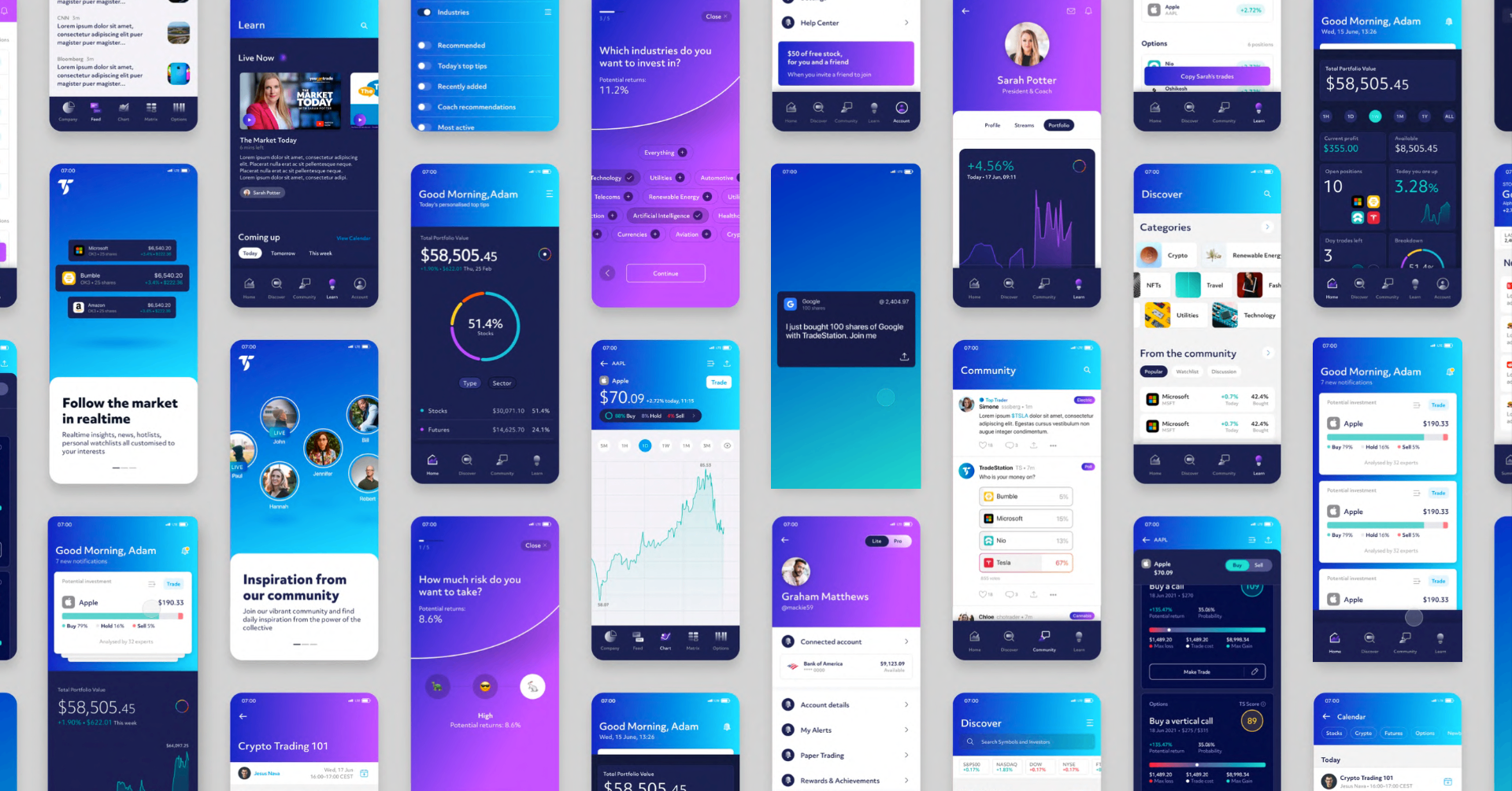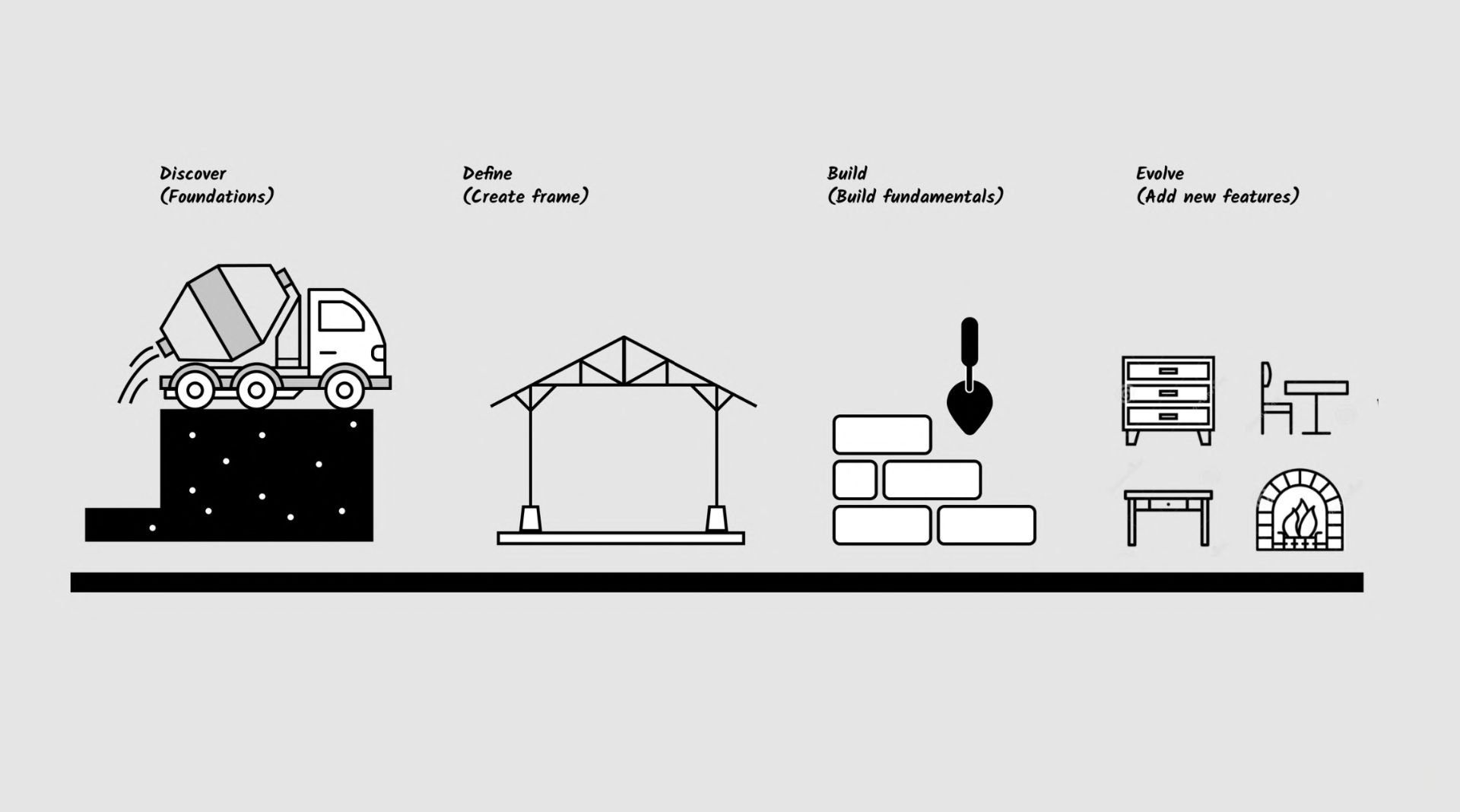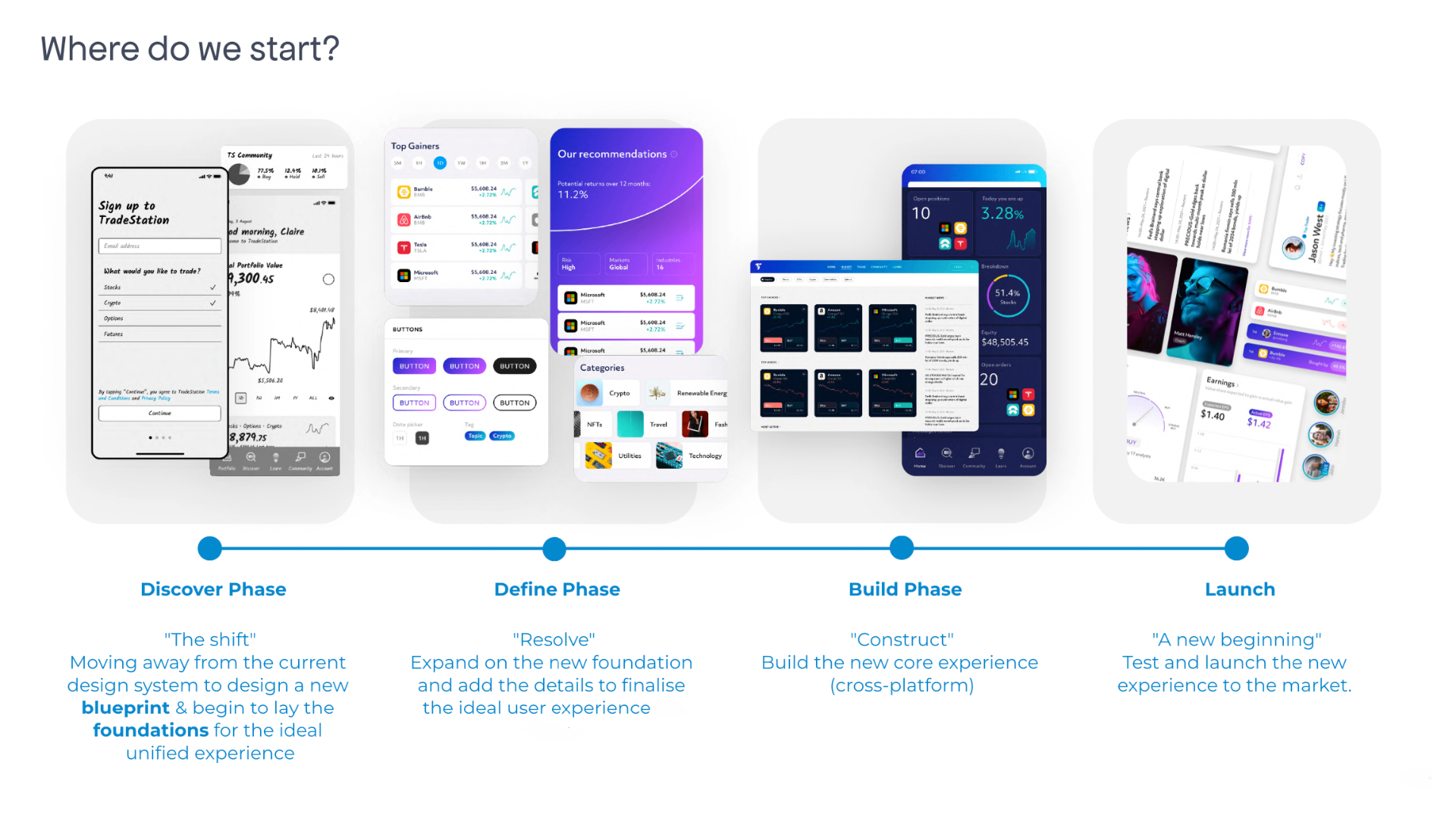
TradeStation: The Art of Platform Transformation
A Product Strategy Case Study Using The Double Lift Method
The Challenge
Every great magic trick begins with a clear understanding of what the audience needs to experience. For TradeStation, a pioneering fintech platform with over 40 years of history, the challenge was clear: their suite of trading tools needed to evolve for a digital-native generation while maintaining the power that sophisticated traders demanded.
Fragmented user experience across mobile, web, and desktop platforms
Complex navigation structures limiting user engagement
Need to support future innovations like community features
Technical complexity slowing down new feature deployment

Our Approach: The Double Lift Method
Like the classic sleight of hand technique that inspired our name, transforming TradeStation's platform required mastering both what users see and what happens behind the scenes.
The Visible Layer (What Users See)
Foundation Building
- Unified navigation structure across mobile and web trading apps
- Consistent design language that scales across platforms
- Intuitive user flows optimized for each device
- Modern interface that appeals to next-generation traders while maintaining professional-grade functionality
Experience Enhancement
- Seamless transitions between different trading interfaces
- Mobile-first design thinking for on-the-go traders
- Clear information hierarchy that guides users naturally
- Flexible layouts supporting future community features
The Hidden Layer (Behind the Scenes Magic)
Strategic Framework
- Comprehensive discovery phase mapping user journeys
- Detailed technical validation ensuring buildable solutions
- Systematic approach to reducing complexity
- Scalable architecture supporting future innovations
Implementation Excellence
- Phased rollout strategy minimizing user disruption
- Rigorous user testing validating design decisions
- Cross-functional alignment between teams
- Clear KPIs tracking success metrics
The Process
Discover
"The Shift"
- Moving away from the current design system
- Creating new blueprints for unified experience
- Beginning to lay foundations for ideal experience
- Conducting extensive user research and interviews
Define
"Resolve"
- Expanding on new foundation
- Adding details to finalize user experience
- Creating high-fidelity prototypes
- Validating with stakeholders and users
Build
"Construct"
- Building new core experience across platforms
- Implementing unified design system
- Technical validation at each stage
- Iterative testing and refinement
Launch
"A New Beginning"
- Testing final experience
- Market introduction
- Gathering user feedback
- Continuous optimization
The Benefits
Unified Experience Excellence
- Consistent look and feel across all platforms
- Intuitive navigation that feels natural everywhere
- Seamless transitions between different interfaces
- Future-ready foundation for new features
Development Efficiency
- Reduced complexity through organized design system
- Faster implementation of new features
- Clear technical validation process
- Scalable architecture supporting growth
User-Centric Innovation
- Mobile-optimized trading experiences
- Flexible layouts supporting new features
- Clear information hierarchy guiding users naturally
Project Phases

Key Learnings
Foundation First
Success in platform transformation requires getting the foundations right. By establishing a clear design system and technical architecture upfront, we created a scalable framework for continuous innovation.
User-Centric Evolution
Rather than a complete overhaul, we implemented changes iteratively based on user feedback, ensuring we maintained core functionality while improving the experience.
Cross-Platform Harmony
Creating consistency didn't mean making everything identical. Instead, we optimized for each platform's strengths while maintaining a cohesive experience across touchpoints.
Future-Ready Architecture
Building for today's needs while planning for tomorrow's possibilities allowed us to create a platform that could evolve with user needs and market demands.